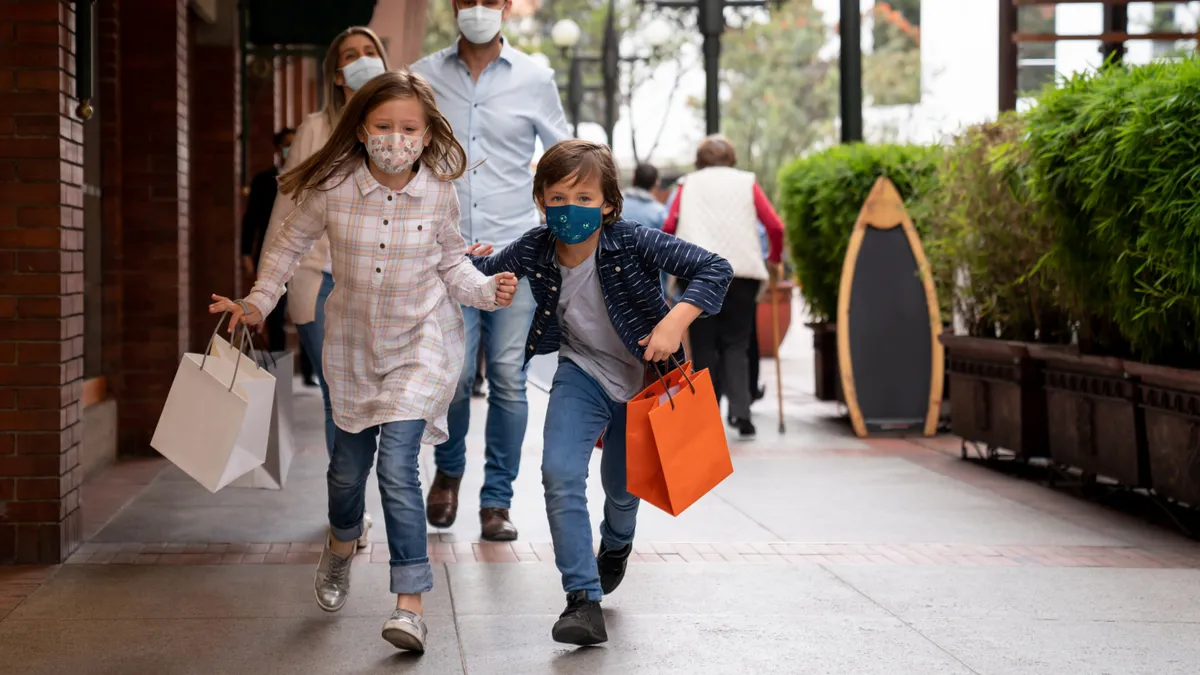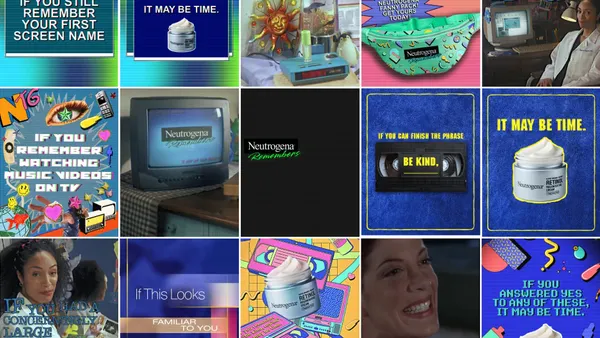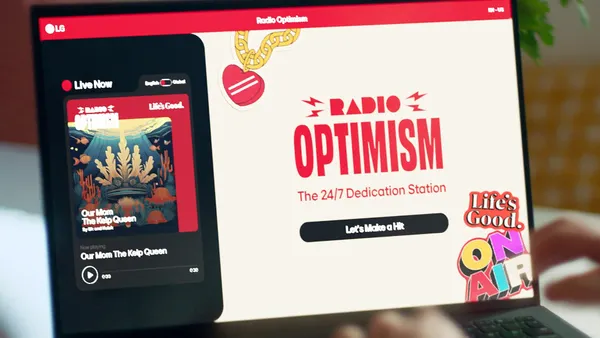Dive Brief:
- COVID-19 themes appeared in 32% of holiday ads analyzed by Ace Metrix, with many focusing on the "new normal" versus traditional seasonal concepts.
- The report found campaigns that nod to the pandemic fared slightly better with viewers than those that did not, but it was not a meaningful difference. Under 10% of holiday ads feature masks this year, with the retail category most frequently emphasizing face coverings, particularly around scenes of in-store shopping.
- As with broad references to the coronavirus, choosing to include masks in holiday ads did not make a noticeable impact on their reception. The findings suggest that adjusting marketing to acknowledge a different tone this season is potentially more important than digging into specifics of life under the pandemic.
Dive Insight:
Given the unusual state of the holidays this year, brands may feel pressure to walk a fine line in their messaging, balancing themes of connection and warmth while avoiding depictions of in-person gatherings. Ace Metrix's report emphasizes that referencing the realities of the pandemic isn't necessarily a recipe for success, even as COVID-19 safety measures take on fresh urgency with virus cases climbing to new peaks around the country.
In fact, an "overwhelming majority" of viewers surveyed by Ace Metrix did not seem to care or comment on ads featuring get-togethers of friends and family with no social distancing measures or masks in place. Less than 1% of viewers, on average, called out their negative feelings toward such ads, though those that did criticized them for being controversial or irresponsible. Ultimately, only 7% of the 125 holiday ads analyzed took what Ace Metrix described as "pre-COVID-19 outlook" in portraying large gatherings.
The absence of many ads depicting masks is potentially unsurprising: Ace Metrix identified apathy toward masks in a previous report from July that revealed fewer than 1% of viewers commented on the lack of face coverings in advertising. Responses to masks in marketing are also stark around political lines, with 76% of Republican audiences feeling negatively toward their inclusion and 88% of Democrats feeling positively, the latest research found.
While many holiday ads make some acknowledgment of the new normal under the pandemic — embodied in services like curbside pickup and contactless payments — other common activities for homebound consumers are sparsely represented. Just 7% of the ads analyzed by Ace Metrix include some sort of Zoom party, for instance, a possible side effect of consumer fatigue with videoconferencing, which has become a de facto means of communication for remote workers. Target's "Great Time" spot features a mix of both digital and in-person celebrations.
Sentimentality, a staple of holiday marketing, can still resonate despite many people remaining in isolation. Etsy released one of the ads deemed most conscious of the coronavirus, per Ace Metrix. Titled "Nana," it shows a grandmother receiving a gift from her grandson, but only being able to discuss it with him over a video call. The bittersweet creative landed in the top-five highest scoring holiday ads, bolstered by likeability and a relevance score that landed 29% above the baseline.
Other ads that performed well key into how marketing has changed behind-the-scenes during the pandemic. Animation is a much larger production trend this year, with 14% of holiday ads applying some form of the medium. Dick's Sporting Goods' "Night at the Distribution Center," which was made with a heavy amount of CGI, was a standout for creativity, notching an ingenuity score higher than 94% of all the holiday ads examined.














